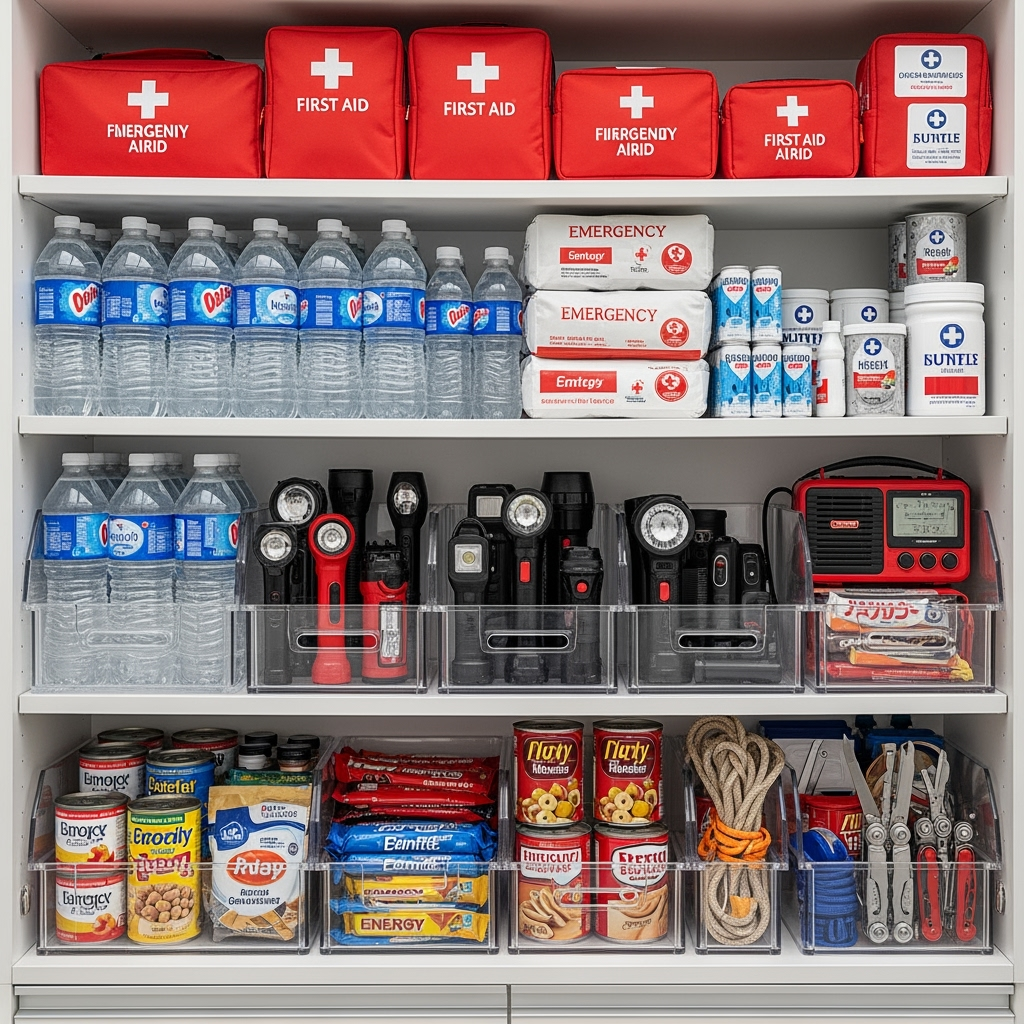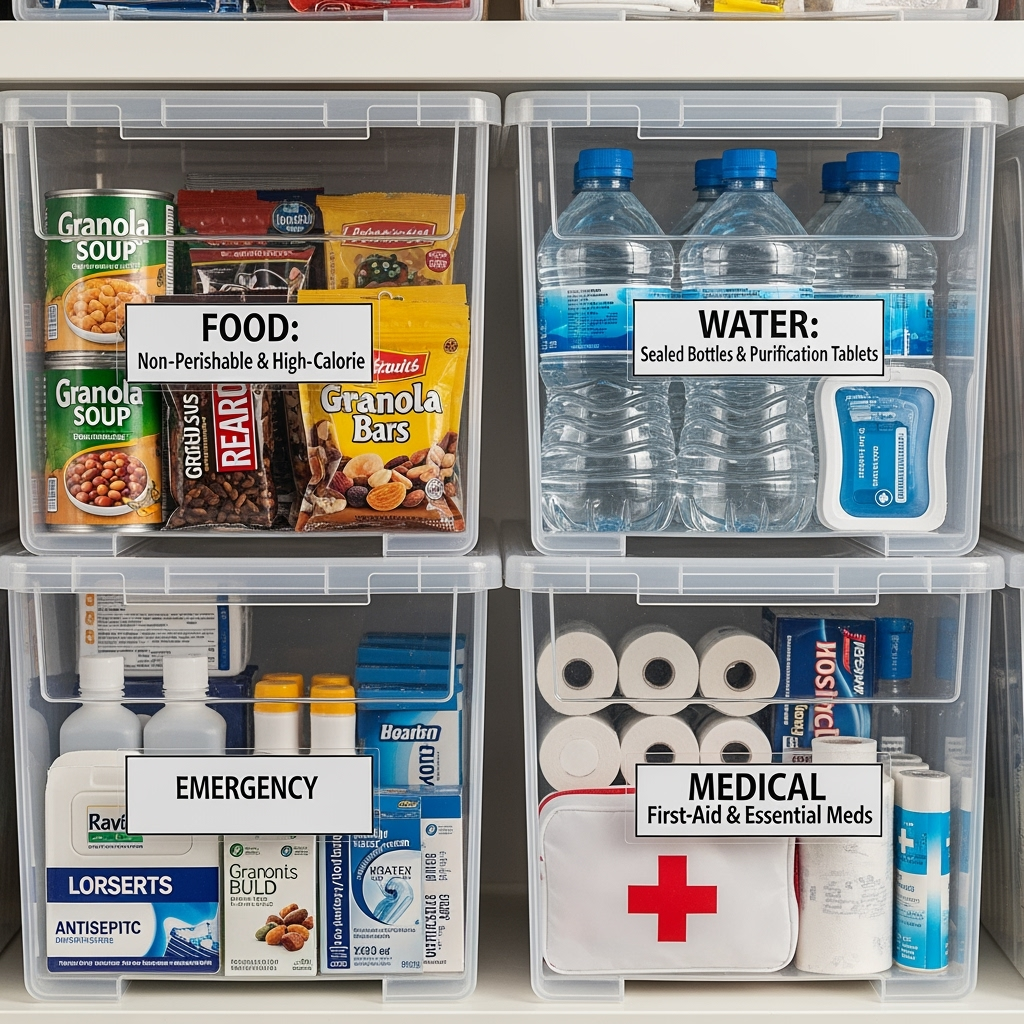
Why Emergency Supply Storage Matters
Being prepared for emergencies isn’t just about having the right supplies – it’s about storing them properly so they’re accessible and well-preserved when you need them most. Whether you’re preparing for natural disasters, unexpected events, or simply want to ensure your family’s safety, proper storage of emergency supplies is crucial.
Choosing the Right Storage Solution
Climate-controlled storage units offer ideal conditions for preserving emergency supplies. Temperature and humidity control help prevent degradation of essential items like:
- Medical supplies and first aid kits
- Emergency food and water
- Battery-powered equipment
- Important documents
- Backup clothing and bedding

Organization Is Key
An effective emergency supply storage system should be:
- Easily accessible during emergencies
- Clearly labeled and inventoried
- Regularly maintained and rotated
- Strategically organized by category
- Protected from environmental factors
Essential Categories to Store
1. Water and Hydration
Store one gallon per person per day, with a minimum two-week supply. Consider:
- Sealed water containers
- Water purification systems
- Portable water containers
2. Non-Perishable Food
Maintain a rotating stock of:
- Canned goods with long shelf life
- Dried foods and meals
- High-energy snacks
- Special dietary items
3. Medical Supplies
Keep a comprehensive first aid kit including:
- Prescription medications
- Basic first aid supplies
- Over-the-counter medicines
- Medical devices and backup equipment
Storage Unit Organization Tips
Follow these guidelines to maximize your emergency supply storage:
1. Use Clear Containers
Clear storage bins allow quick identification of supplies and make inventory checks easier. Label everything clearly with contents and expiration dates.
2. Create an Access Plan
Organize supplies so the most critical items are easily accessible. Keep a detailed map of your storage layout.
3. Maintain Regular Rotation
Set up a schedule to check and rotate supplies, ensuring nothing expires. Keep an inventory list with expiration dates.
Climate Control Considerations
Different emergency supplies have varying storage requirements:
- Medical supplies: 59-86°F with 35-46% humidity
- Food storage: 50-70°F with low humidity
- Electronics and batteries: Cool, dry conditions
- Documents: Climate-controlled environment to prevent degradation
Security Measures
Protect your emergency supplies with:
- Secure locks and access control
- Regular security monitoring
- Insurance coverage for stored items
- Backup access plans
Maintenance Schedule
Implement a regular maintenance routine:
- Monthly: Quick inventory check
- Quarterly: Detailed supply rotation
- Semi-annually: Complete inventory audit
- Annually: Comprehensive review and updates
Emergency Access Planning
Ensure multiple family members know:
- Storage unit location and access codes
- Inventory system and organization
- Emergency contact information
- Backup access methods
Getting Started
To begin organizing your emergency supply storage:
- Assess your family’s specific needs
- Create a comprehensive supply list
- Select an appropriately sized storage unit
- Implement an organization system
- Establish maintenance routines
Conclusion
Proper storage of emergency supplies isn’t just about preparation – it’s about peace of mind. With a well-organized storage system, you’ll know exactly what you have and where to find it when you need it most. Public Storage offers the perfect solution for maintaining your emergency preparedness supplies in optimal condition, ensuring they’re ready when you need them.










Leave a Reply